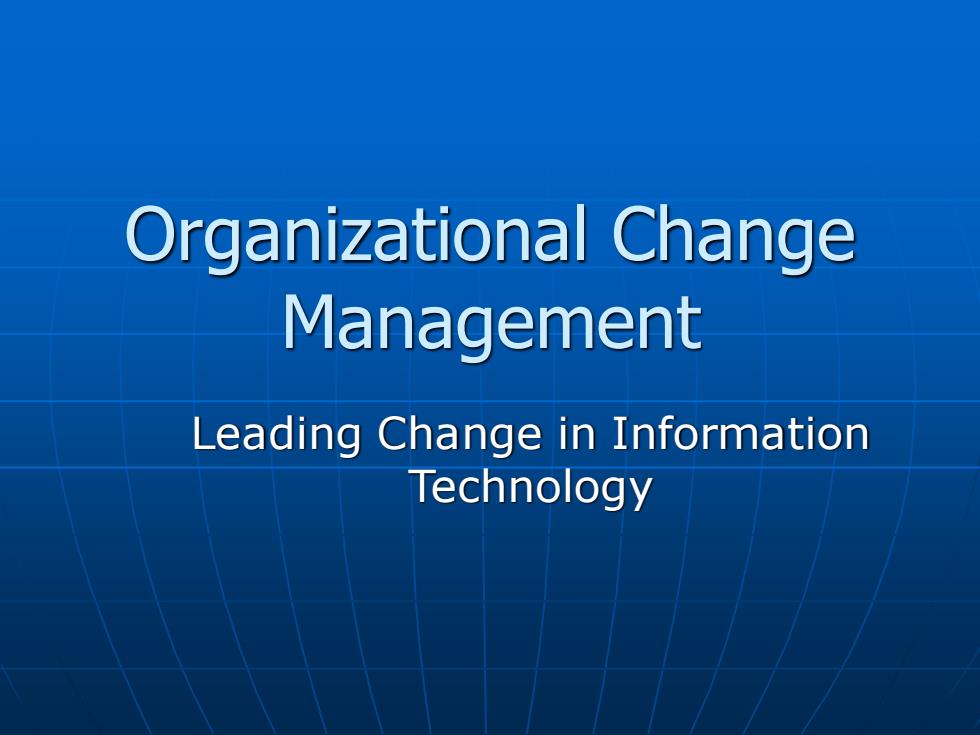
Organizational Change Management Leading Change in Information Technology
Organizational Change Management Leading Change in Information Technology
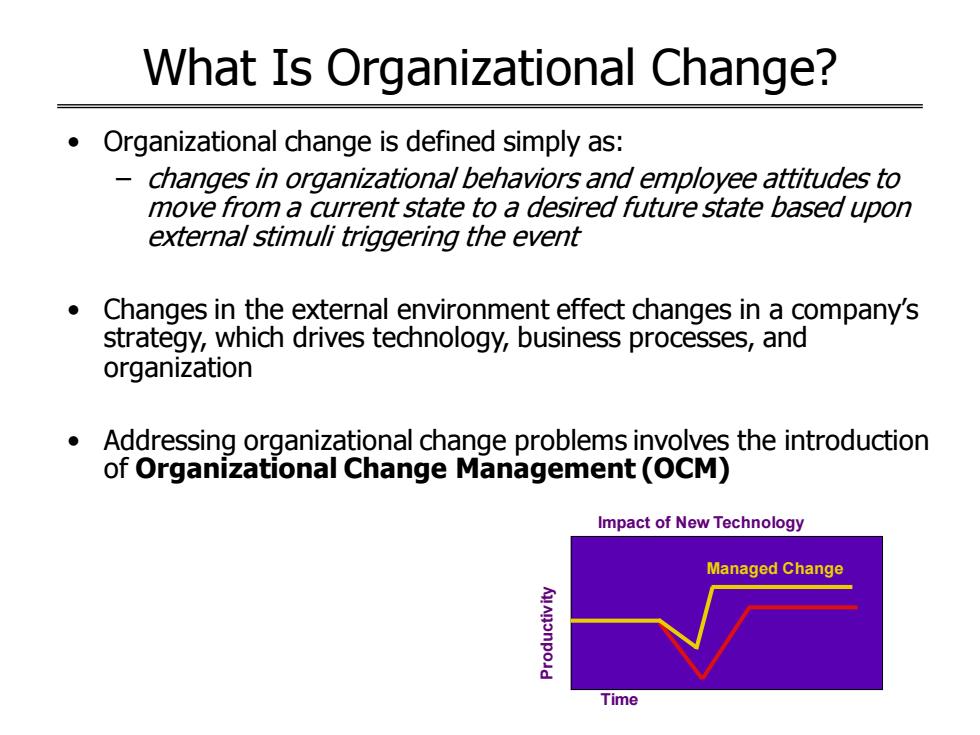
What Is Organizational Change? Organizational change is defined simply as: - changes in organizational behaviors and employee attitudes to move from a current state to a desired future state based upon external stimuli triggering the event Changes in the external environment effect changes in a company's strategy,which drives technology,business processes,and organization Addressing organizational change problems involves the introduction of Organizational Change Management(OCM) Impact of New Technology Managed Change Time
What Is Organizational Change? • Organizational change is defined simply as: – changes in organizational behaviors and employee attitudes to move from a current state to a desired future state based upon external stimuli triggering the event • Changes in the external environment effect changes in a company’s strategy, which drives technology, business processes, and organization • Addressing organizational change problems involves the introduction of Organizational Change Management (OCM) Time Productivity Impact of New Technology Managed Change
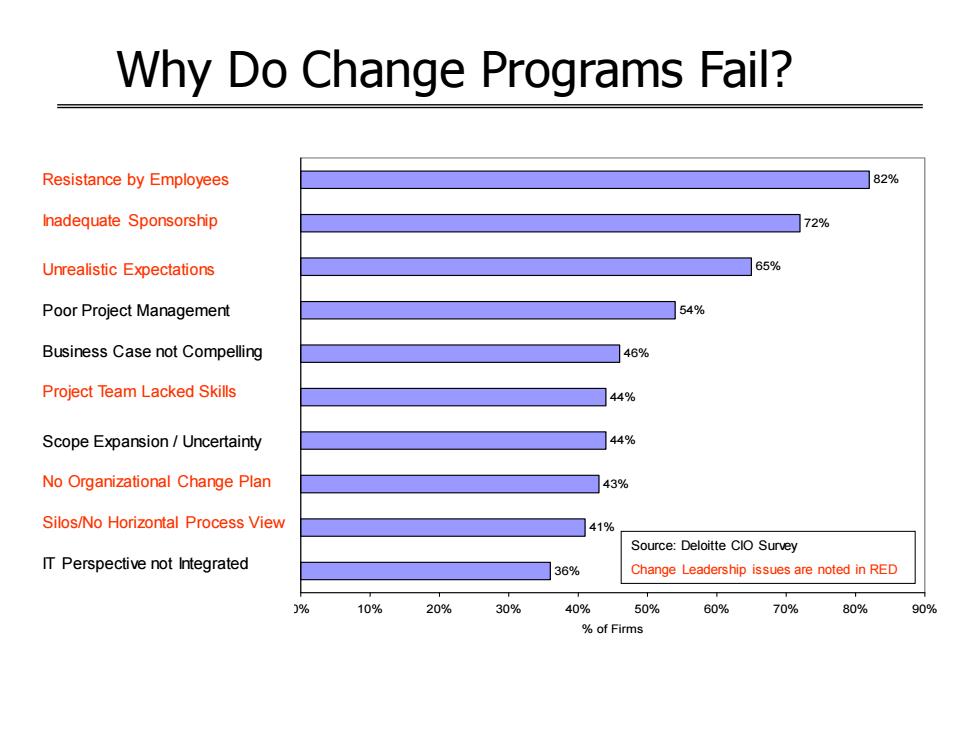
Why Do Change Programs Fail? Resistance by Employees 82% Inadequate Sponsorship 72% Unrealistic Expectations 65% Poor Project Management 54% Business Case not Compelling 46% Project Team Lacked Skills 44% Scope Expansion/Uncertainty 44% No Organizational Change Plan 43% Silos/No Horizontal Process View 41% Source:Deloitte CIO Survey IT Perspective not Integrated 36% Change Leadership issues are noted in RED 10% 20% 30% 40% 50% 60% 70% 80% 90% of Firms
Why Do Change Programs Fail? 36% 41% 43% 44% 44% 46% 54% 65% 72% 82% 0% 10% 20% 30% 40% 50% 60% 70% 80% 90% IT Perspective not Integrated Silos / No Horizontal Process View No Organizational Change Plan Project Team Lacked Skills Scope Expansion / Uncertainty Business Case not Compelling Poor Project Management Unrealistic Expectations Inadequate Sponsorship Resistance By Employees % of Firms Why Do Change Programs Fail? Resistance by Employees Inadequate Sponsorship Unrealistic Expectations Poor Project Management Business Case not Compelling Project Team Lacked Skills Scope Expansion / Uncertainty No Organizational Change Plan Silos/No Horizontal Process View IT Perspective not Integrated Source: Deloitte CIO Survey Change Leadership issues are noted in RED
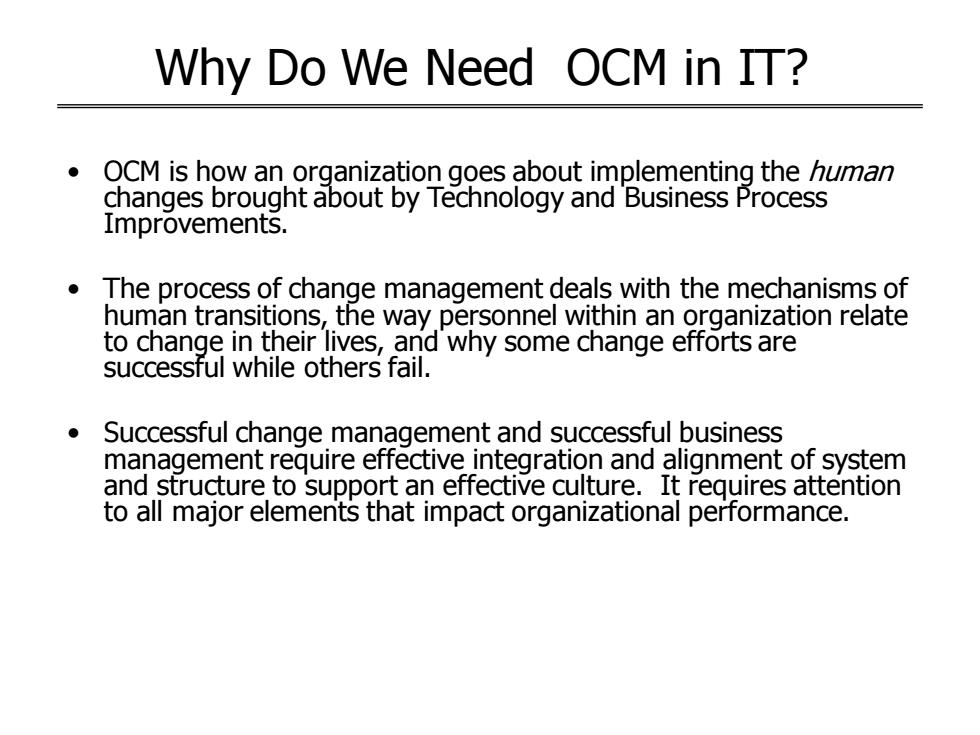
Why Do We Need OCM in IT? OCM is how an organization goes about implementing the human changes brought about by Technology and Business Process Improvements. The process of change management deals with the mechanisms of human transitions,the way personnel within an organization relate to change in their lives,and why some change efforts are successful while others fail. Successful change management and successful business management require effective integration and alignment of system and structure to support an effective culture.It requires attention to all major elements that impact organizational performance
Why Do We Need OCM in IT? • OCM is how an organization goes about implementing the human changes brought about by Technology and Business Process Improvements. • The process of change management deals with the mechanisms of human transitions, the way personnel within an organization relate to change in their lives, and why some change efforts are successful while others fail. • Successful change management and successful business management require effective integration and alignment of system and structure to support an effective culture. It requires attention to all major elements that impact organizational performance
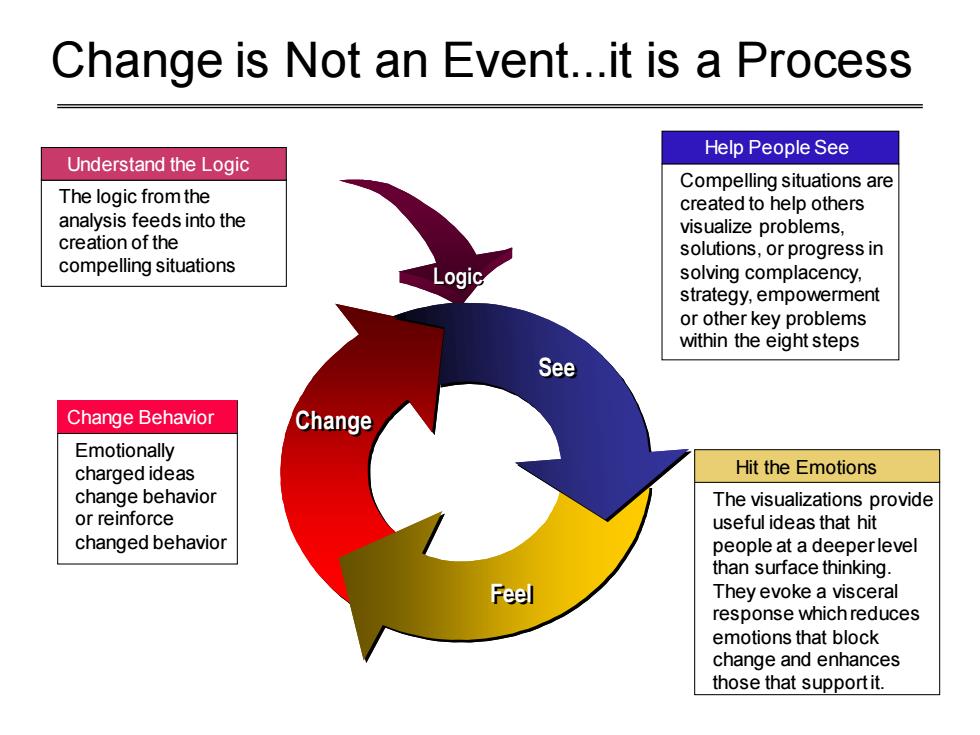
Change is Not an Event.it is a Process Help People See Understand the Logic Compelling situations are The logic from the created to help others analysis feeds into the visualize problems, creation of the solutions,or progress in compelling situations Logic solving complacency, strategy,empowerment or other key problems within the eight steps See Change Behavior Change Emotionally charged ideas Hit the Emotions change behavior The visualizations provide or reinforce useful ideas that hit changed behavior people at a deeperlevel than surface thinking. Feel They evoke a visceral response which reduces emotions that block change and enhances those that support it
See Feel Change Logic See Feel Change Logic Change is Not an Event.it is a Process The logic from the analysis feeds into the creation of the compelling situations Emotionally charged ideas change behavior or reinforce changed behavior Compelling situations are created to help others visualize problems, solutions, or progress in solving complacency, strategy, empowerment or other key problems within the eight steps The visualizations provide useful ideas that hit people at a deeper level than surface thinking. They evoke a visceral response which reduces emotions that block change and enhances those that support it. Help People See Hit the Emotions Understand the Logic Change Behavior